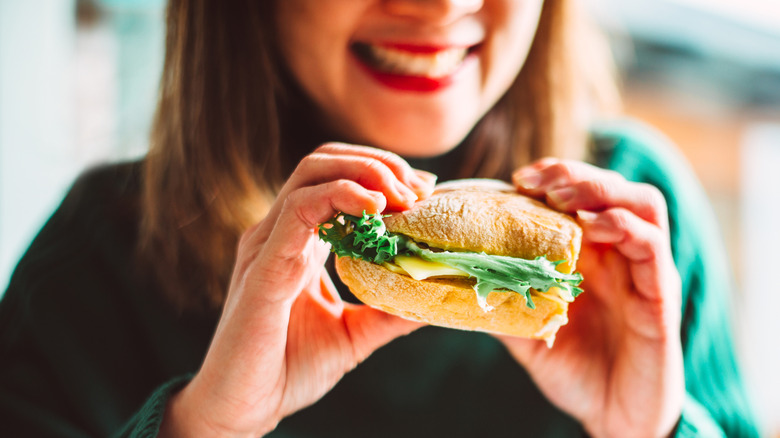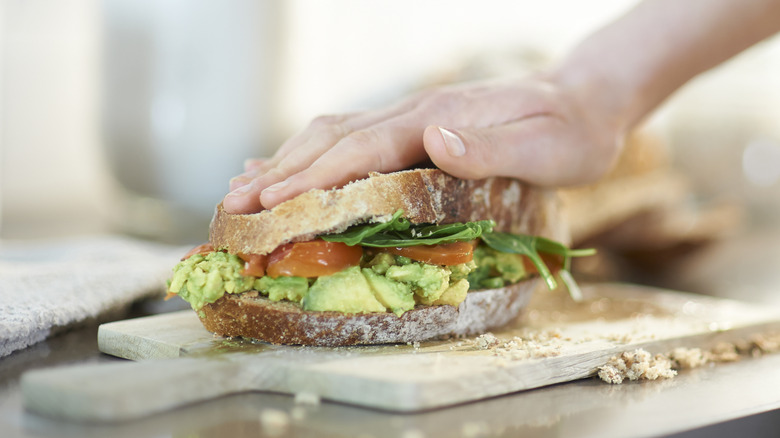How To Assemble A Sandwich So It Doesn't Fall Apart In Seconds
We may receive a commission on purchases made from links.
When cooking, the hard work is usually done by the time you sit down at the table; eating is the easy part. That is not the case for a sandwich. A sandwich is one of the easiest meals to make, but it is almost always a recipe for a plate full of various parts disembodied from the whole. Whether it's a slice of tomato slipping out, chunks of chicken plopping down, or pieces of bread disintegrating to a soggy slop, sandwiches require specific setup. Max Halley, owner of Max's Sandwich Shop and author of "Max's Sandwich Book: The Ultimate Guide to Creating Perfection Between Two Slices of Bread," has the structured-sandwich solution.
When we asked if he advised stacking a sandwich from heaviest ingredient to lightest, he disapproved. "It's a sandwich, not a building site," he told The Takeout. Rather, he suggested prioritizing taste over reason. "Things should be put in a sandwich in the order that makes them eat the best, not in ascending order determined by their diminishing density," Halley said. For example, some may prefer a BLT to be crafted in a specific order, depending on how they want the flavors to interact.
However, Halley explained that there is one ingredient that is absolutely crucial for sandwich integrity. "My secret is to use mayonnaise as amazing, tasty food glue to hold my really light, crispy things in place," he said. Beyond mayonnaise, there are other suitable types of food glue. An aioli, mashed avocado, or thick mustard also works as a binder for sandwich ingredients.
More tips for structuring a sandwich
When we asked Halley if he had other tricks for keeping a sandwich together, he doubled down on the efficacy of mayonnaise as glue. But he also offered another pointer: "Giving it a good squish before you get stuck in works very well!" he said. There are some other tips, however, for building a sound sandwich that won't fall apart between your fingers. First off, the sandwich's structural integrity can come down to the bread. Toasting the bread for a sandwich can give it more strength.
Because bread can get soggy (even when toasted), it's also important to keep the wetter ingredients away from it. After washing your veggies, pat them thoroughly dry. Even still, they will probably contain some residual moisture, so it's best to keep vegetables like tomatoes or cucumbers away from the bread. Wet and oddly textured ingredient — like pepperoncini, pickles, or onion slices – should be layered in the middle of the sandwich, tucked neatly between ingredients with more structure to them. Lettuce dressed in a vinaigrette (like in an Italian sub) should also be kept to the sandwich's middle. Ingredients like deli meats, cheeses, greens, sliced radishes, and avocado can act as barriers and prevent the bread from becoming soggy. And no matter how you build it, there is, of course, only one correct way to cut a sandwich.

